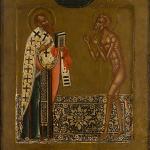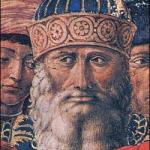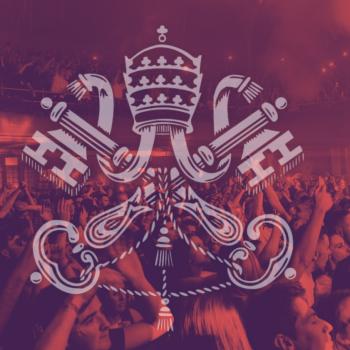I’m pleased to introduce Paul Foth (@paulrfoth), an independent scholar focusing on twentieth and twenty-first-century evangelical and charismatic Christianity. He has an M.T.S. in Church History from Trinity Western University. He lives and leads bird-watching tours in 100 Mile House, BC.
***
Ten years ago in March 2013, the newly elected Argentine Jesuit pope took the name Francis. He quickly gained a reputation for his simplicity, his love for the poor, and his ecumenical overtures. Evangelicals took note. Writing in Christianity Today in June 2013, evangelical theologian Timothy George praised the new pope for imitating Saint Francis of Assisi’s reforming impulse, humble obedience to Christ, and evangelistic zeal. Recalling evangelical-Catholic cooperation in the pro-life movement, George called for a strong partnership with this new pope.[1] In a Sojourners article a year later, Shane Claiborne offered his praise of Pope Francis’ compassion and humility. “I can’t help but think Francis of Assisi (the pope’s radical namesake),” Claiborne states, “and all the angels and saints in heaven must be smiling as they look down on our brother Jorge Mario Bergoglio, whom we now fondly call ‘Pope Francis.’”[2] Both Claiborne and George were particularly excited by the idea that the Pope Francis might be following in the footsteps of Saint Francis.
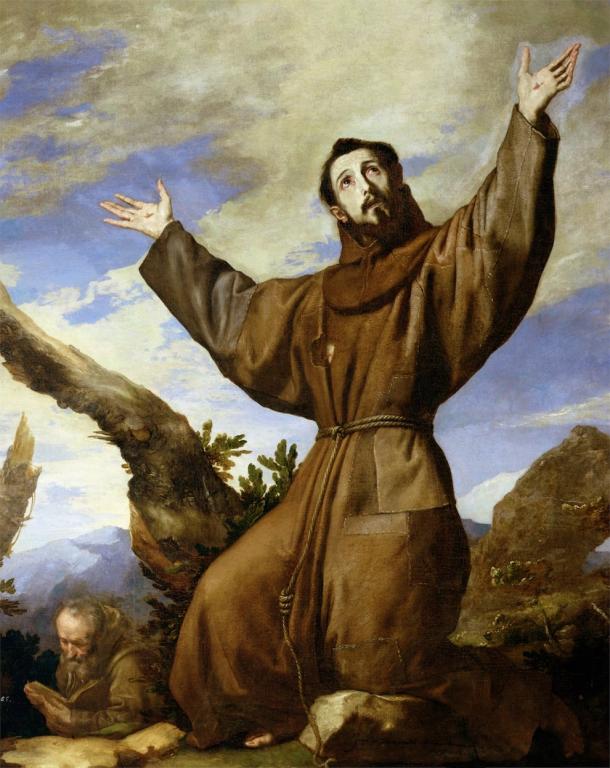
With increasing openness to Christian spirituality outside of Protestantism, a growing number of evangelicals in the US and elsewhere adopted Saint Francis of Assisi as their own beginning in the late twentieth century. Leaders, writers, activists and musicians throughout evangelical networks claimed to be stirred by the saint’s authentic faith, exuberant spirituality, committed discipleship, and compassionate love. Evangelicals from John Wimber to John Perkins to John Piper claimed Saint Francis as an inspiration. For my master’s thesis at Trinity Western University, I researched evangelical interest in Saint Francis in several movements or sub-groups within evangelicalism: the spiritual formation and “ancient-future” movement; the evangelical left and evangelical environmentalism; the charismatic movement; establishment neo-evangelicalism; new monasticism; and the “emergent” or “emergent church.” From different corners of the fragmented evangelical world came wildly divergent pictures of Saint Francis. But these ideologically diverse evangelicals all came to see Saint Francis as a quintessential, authentic Christian, and a new exemplar of evangelical faith in the changing evangelical world.
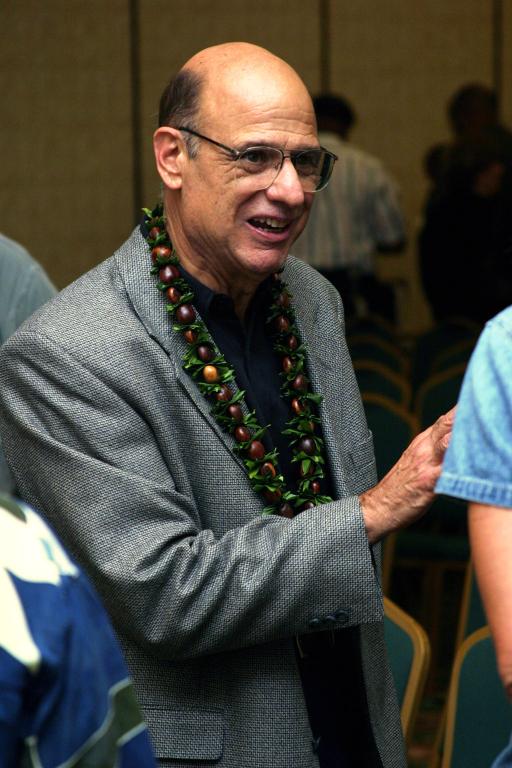
Some evangelical leaders invoked Saint Francis to support of their own projects for spiritual renewal. Saint Francis was a frequent character in Richard Foster’s many writings about recovering classical spiritual traditions. Tony Campolo declared that Saint Francis’ embrace of the leper taught him the path of mystically encountering Christ through the poor: “To Francis,” he claims, “the poor were sacramental.”[3] Vineyard leader John Wimber and co-author Kevin Springer appealed to Saint Francis and other historic Christians in their defense of charismatic practices to their skeptical evangelical audiences. Taking this idea further, itinerant California charismatic leader John Crowder sought to connect ecstatic charismatic practices with historic Christian mysticism. Crowder praised Saint Francis for his premodern “nature mysticism,” his boisterous joy, his populist reforming impulse, and even his receipt of the stigmata. All these, for Crowder, were experiences available to contemporary charismatic Christians who are “saturated in God’s Spirit.”[4]
Evangelical interest in Saint Francis was most obvious within the evangelical political left, who believed that Saint Francis offered a voice of peace, simplicity, compassion, and radical discipleship during decades marked by injustice, militarism, and consumerism. Sojourners founder Jim Wallis spoke of watching Franco Zeffirelli’s Saint Francis biopic Brother Sun, Sister Moon as something of a conversion experience. “The evangelical poverty of Francis,” Wallis claimed, “had evangelized me to the depths of my soul.”[5] Without necessarily sharing broader political progressive causes, other evangelical environmentalists using the language of “stewardship” and “Creation care” cited Francis as a model of intimacy with creation.[6]
Brian McLaren and other emerging church figures embraced a progressive version of Saint Francis. McLaren uses Saint Francis’ example of brotherhood with creation as a foil to popular “Evangelical-dispensational ‘left behind’ eschatology.”[7] McLaren upholds Francis as a model for spiritual disciplines in the vein of Foster[8] and as a model for authentic selfhood with “the freedom to be who we are, what we are, as we are.”[9] For McLaren, Saint Francis’ embrace of the Egyptian sultan points to the possibilities that Abrahamic religions could “dream a dream of peace together.”[10] Emerging church novelist Ian Cron’s Chasing Francis dramatizes the same themes, telling the unsubtle story of a burned out megachurch pastor rediscovering faith and authenticity by retracing Saint Francis’ steps in Italy.
Longtime Christianity Today editor Mark Galli, who had been perpetrating a pattern of sexual harassment during his tenure, waged an interpretive battle with McLaren and other progressives over the meaning of Saint Francis. In frequent articles and one book about Saint Francis, Galli repeated the refrain that popular sentimentality and progressive interpretations of Saint Francis were out of line. “Though Francis revered all creatures,” Galli states, “he was not a vegetarian.”[11] Like other saints, Francis did not let “the cult of tolerance” keep him from direct, even mean confrontation of sin and error.[12] Galli’s Francis was shaped primarily by strict biblical obedience viewed through a Bonhoefferian lens of costly discipleship (and perhaps a dose of John Wayne). In a more evenhanded scholarly book on Saint Francis, Christianity Today journalist Wendy Murray echoed similar critiques. “God is the recipient [of the praise]” in Saint Francis’ “Canticle of the Sun,” claims Murray. “It is not pantheism.”[13]
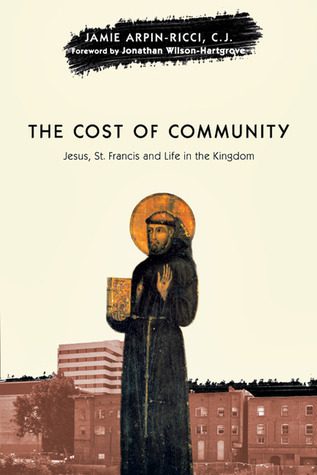 Young evangelicals in new monastic movements in the 1990s and 2000s displayed the most striking adoptions of Franciscan ideals. Inspired by Brother Sun, Sister Moon, contemporary Christian musician Rich Mullins formed the “Kid Brothers of Saint Frank” in the 1990s, a small group of musicians practicing modified Franciscan vows as Protestants. The Kid Brothers wrote and produced a musical based on the life of Saint Francis set in the old West. “The Canticle of the Plains” was released as a CD featuring other contemporary Christian musicians and was performed as a play at Wheaton College, starring a young Shane Claiborne.[14] Claiborne became the popular face of new monasticism in the 2000s, as “intentional communities” of young evangelicals and others multiplied in urban poor neighborhoods. Many new monastics saw themselves as continuing the Franciscan mission for peace and love for the poor. According to Claiborne, Saint Francis was “one of the first critics of capitalism, one of the earliest Christian environmentalists, a sassy reformer of the Church and one of the classic conscientious objectors to war.”[15] Canadian Mennonite new monastic Jaimie Arpin-Ricci penned The Cost of Community, a reflection on community based on the life of Saint Francis (with a significant nod to Dietrich Bonhoeffer). “Francis’s commitment to live in solidarity with the poor as an expression of his allegiance to Christ” and his “commitment to live the words of Jesus in the Sermon on the Mount” inspired Arpin-Ricci’s own embrace of community among the poor in downtown Winnipeg.[16] Leaders of the 24/7 prayer movement founded in the UK called themselves “New Friars.” Opening prayer rooms in urban communities, they also claimed to follow Francis, who “formed his Franciscan movement out of an increasing frustration with organized religion.”[17] For new monastics, Saint Francis was a reformer, rebel, and a saint to emulate even in his monasticism.
Young evangelicals in new monastic movements in the 1990s and 2000s displayed the most striking adoptions of Franciscan ideals. Inspired by Brother Sun, Sister Moon, contemporary Christian musician Rich Mullins formed the “Kid Brothers of Saint Frank” in the 1990s, a small group of musicians practicing modified Franciscan vows as Protestants. The Kid Brothers wrote and produced a musical based on the life of Saint Francis set in the old West. “The Canticle of the Plains” was released as a CD featuring other contemporary Christian musicians and was performed as a play at Wheaton College, starring a young Shane Claiborne.[14] Claiborne became the popular face of new monasticism in the 2000s, as “intentional communities” of young evangelicals and others multiplied in urban poor neighborhoods. Many new monastics saw themselves as continuing the Franciscan mission for peace and love for the poor. According to Claiborne, Saint Francis was “one of the first critics of capitalism, one of the earliest Christian environmentalists, a sassy reformer of the Church and one of the classic conscientious objectors to war.”[15] Canadian Mennonite new monastic Jaimie Arpin-Ricci penned The Cost of Community, a reflection on community based on the life of Saint Francis (with a significant nod to Dietrich Bonhoeffer). “Francis’s commitment to live in solidarity with the poor as an expression of his allegiance to Christ” and his “commitment to live the words of Jesus in the Sermon on the Mount” inspired Arpin-Ricci’s own embrace of community among the poor in downtown Winnipeg.[16] Leaders of the 24/7 prayer movement founded in the UK called themselves “New Friars.” Opening prayer rooms in urban communities, they also claimed to follow Francis, who “formed his Franciscan movement out of an increasing frustration with organized religion.”[17] For new monastics, Saint Francis was a reformer, rebel, and a saint to emulate even in his monasticism.
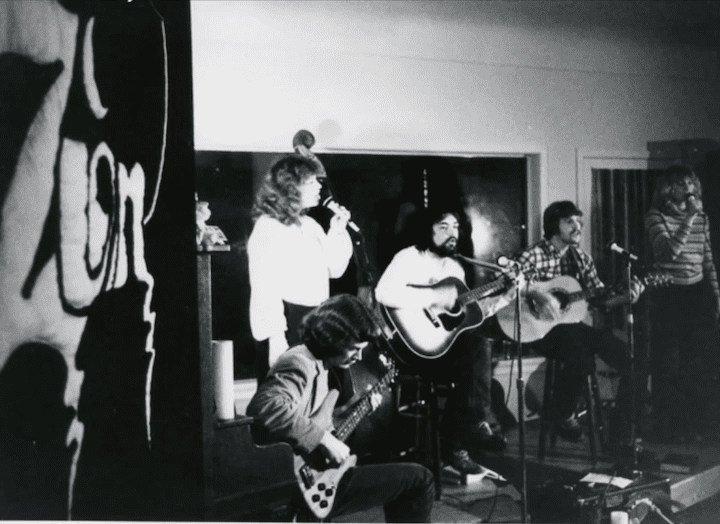
Saint Francis of Assisi’s ubiquitous presence in popular American culture and in the evangelical world elicited an array of responses. Separatist fundamentalists David Cloud mourned that evangelical leaders were falling victim to “a false sacramental gospel of faith-works.”[18] On the other side of the spectrum, early Christian musician John Michael Talbot, the example of Saint Francis led him to join the Catholic Church, form a monastic community and sport a brown habit. Most evangelicals landed somewhere in between. Many of Saint Francis’ evangelical admirers held significant misgivings about the Saint’s example, especially around wealth and poverty. Richard Foster counseled moderation for Christians trying to follow Saint Francis’ way of life. [19] Dallas Willard and C. Peter Wagner were highly critical of Francis’ denunciations of the evils of wealth, instead invoking the positive role of money and generosity (and, in Wagner’s case, prosperity and influence).[20] Other evangelicals (though not all) simply ignored ideas that might be troubling, such as Saint Francis’ papal allegiance.
Evangelical interpretations of Saint Francis ran the ideological gamut from progressive to conservative, from religiously exclusivist to pluralist, and from high church to no church. Saint Francis could be an ideal Christian to imitate or an admirable but distant saint. In the late twentieth-century evangelicals had been fraying politically, theologically and culturally (if they ever had truly been as united as neo-evangelical institution builders had hoped). Charismatics, liturgical renewalists, political progressives and theological conservatives all sought influence in wider evangelical networks. Their many versions of saint Francis reveal a desire for new authorities and models of Christian faith in this changing religious landscape.
 There were commonalities that emerged too. Influenced as they were by biblical literalism, some evangelicals were quick to accept the historicity of Saint Francis’ miracle stories. Many evangelical interpreters depicted Saint Francis as a reformer, even a proto-Protestant. Most evangelical admirers of Francis cited his unadulterated form of Christian faith, often connecting him to an ideal age of pre-Constantinian Christianity. So ubiquitous was the view of Saint Francis as a quintessential Christian that a banner of Saint Francis was included alongside Protestant reformers at the Billy Graham Museum’s “rotunda of witnesses.”[21] Above all, Saint Francis was admired for his authenticity, illuminating an ongoing shift in evangelical values, especially among evangelical elites. This gradual shift from strongly emphasizing biblical literalism, evangelism and conversion toward values of authenticity, discipleship and holistic spirituality was perhaps best captured by a saying of Saint Francis frequently cited by evangelicals: “Preach the gospel at all times and, if necessary, use words.” Only Saint Francis never said this. The quotation originated from sources unknown in the 1990s and made the rounds among evangelicals. Historically precise or not, Saint Francis was born again as a hero for an evolving evangelical world.
There were commonalities that emerged too. Influenced as they were by biblical literalism, some evangelicals were quick to accept the historicity of Saint Francis’ miracle stories. Many evangelical interpreters depicted Saint Francis as a reformer, even a proto-Protestant. Most evangelical admirers of Francis cited his unadulterated form of Christian faith, often connecting him to an ideal age of pre-Constantinian Christianity. So ubiquitous was the view of Saint Francis as a quintessential Christian that a banner of Saint Francis was included alongside Protestant reformers at the Billy Graham Museum’s “rotunda of witnesses.”[21] Above all, Saint Francis was admired for his authenticity, illuminating an ongoing shift in evangelical values, especially among evangelical elites. This gradual shift from strongly emphasizing biblical literalism, evangelism and conversion toward values of authenticity, discipleship and holistic spirituality was perhaps best captured by a saying of Saint Francis frequently cited by evangelicals: “Preach the gospel at all times and, if necessary, use words.” Only Saint Francis never said this. The quotation originated from sources unknown in the 1990s and made the rounds among evangelicals. Historically precise or not, Saint Francis was born again as a hero for an evolving evangelical world.
Notes
[1] Timothy George, “Our Francis Too,” Christianity Today, June 2013, 65.
[2] Shane Claiborne, “The First Year of the Pope’s Revolution,” Sojourners, March 14, 2014, https://sojo.net/articles/first-year-pope-s-revolution.
[3] Tony Campolo, Wake Up America! Answering God’s Radical Call While Living in the Real World (San Francisco: Harper San Francisco, 1991), 24.
[4] John Crowder, Miracle Workers, Reformers and New Mystics (Shippensburg, PA: Destiny Image, 2006), 94-101.
[5] Jim Wallis, “An Explosion of Love,” Sojourners, January 1981, 3.
[6] Peter De Vos, et. al, Earthkeeping in the ‘90s: Stewardship of Creation, rev. ed., ed. Loren Wilkinson (Grand Rapids: William B. Eerdmans, 1991).
[7] [7] Brian McLaren, A Generous Orthodoxy: Why I am a Missional, Evangelical, Post/Protestant, Liberal/Conservative, Mystical/Poetic, Biblical, Charismatic/Contemplative, Fundamentalist/Calvinist, Anabaptist/Anglican, Methodist, Catholic, Green, Incarnational, Depressed-yet-hopeful, Emergent, Unfinished Christian (El Cajon: Emergent YS, 2004), 237.
[8] Brian McLaren, Finding Our Way Again (Nashville: Thomas Nelson, 2008), 194.
[9] Brian McLaren, Naked Spirituality (San Francisco: Harper One, 1989), vii-viii.
[10] McLaren, Finding Our Way Again, 199.
[11] Francis of Assisi: Did You Know?” Christian History 42, 1994, https://christianhistoryinstitute.org/uploaded/50cf8154cf2b67.43105470.pdf.
[12] Mark Galli, “Saint Nasty,” Christianity Today, June 1996,
[13] Wendy Murray, A Mended and Broken Heart: The Life and Love of Francis of Assisi (New York: Basic Books, 2008), 145.
[14] Shane Claiborne, The Irresistible Revolution: Living as an Ordinary Radical (Grand Rapids: Zondervan, 2006), 98.
[15] Shane Claiborne, “Praying with Francis, the Radical Christian Peacemaker,” The Blog, Huffington Post, October 3, 2011, https://www.huffingtonpost.com/shane-claiborne/st-francis-radical-christian-peace_b_992545.html.
[16] Jamie Arpin-Ricci, The Cost of Community: Jesus, St. Francis and Life in the Kingdom (Downers Grove: InterVarsity Press, 2011), 16.
[17] Andy Freeman and Peter Grieg, Punk Monk: New Monasticism and the Ancient Art of Breathing (Ventura: Regal, 2007), 39.
[18] David Cloud, “Billy Graham and Rome,” Way of Life Literature, February 1, 2006, https://www.wayoflife.org/database/billy_graham_and_rome.html.
[19] Richard J. Foster, Money, Sex and Power: The Challenge of the Disciplined Life (San Francisco: Harper and Row, 1985).
[20] Willard, The Spirit of the Disciplines, 195-196. Wagner, The Church in the Workplace, 121.
[21] “Francis of Assisi: Banners from the Rotunda of Witnesses,” Wheaton College, accessed June 18, 2018, https://www.wheaton.edu/about-wheaton/museum-and-collections/billy-graham-center-museum/exhibits/rotunda-of-witnesses/francis-of-assisi/.


